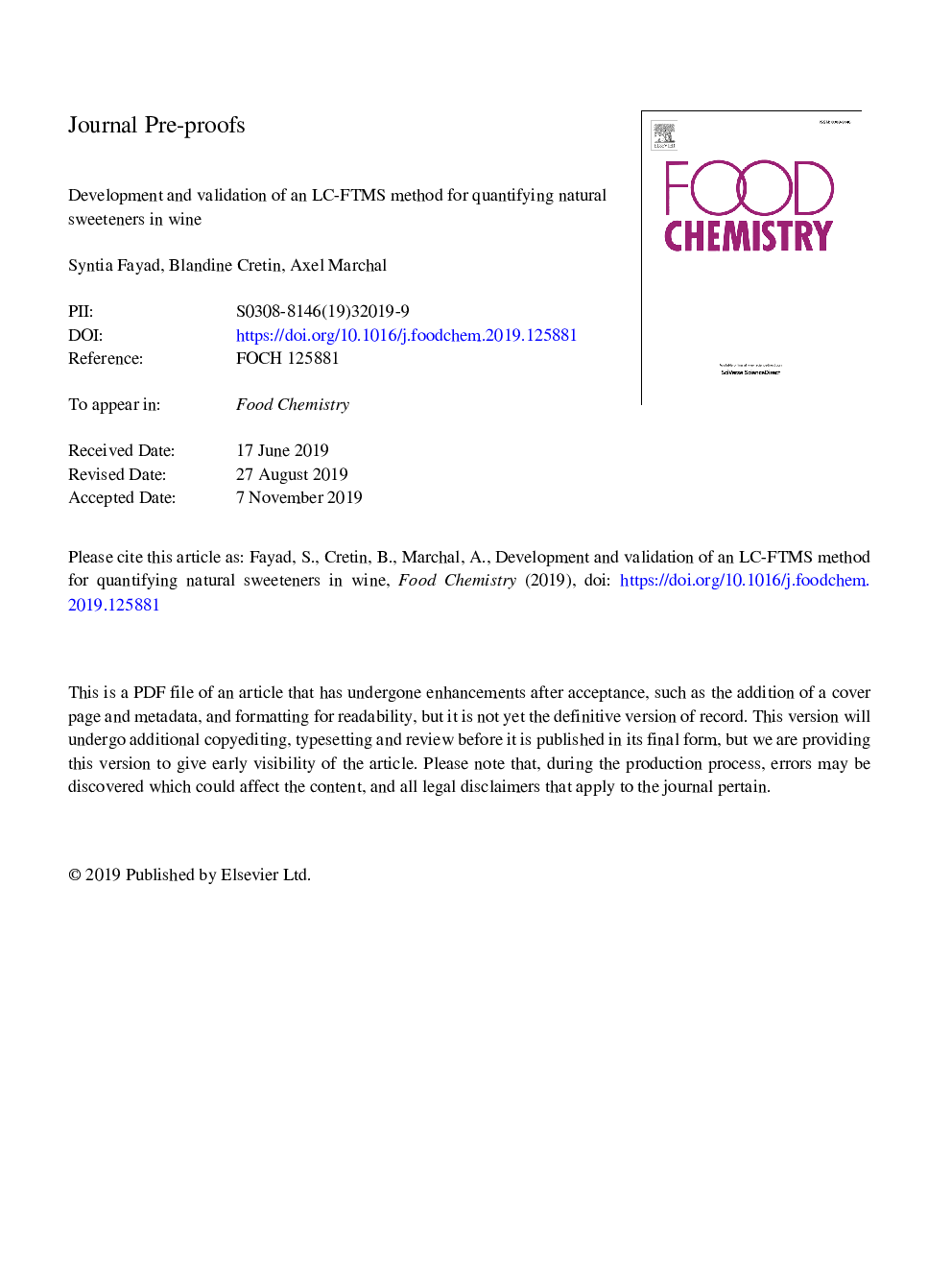| Article ID | Journal | Published Year | Pages | File Type |
|---|---|---|---|---|
| 13472059 | Food Chemistry | 2020 | 51 Pages |
Abstract
The quality of a wine largely depends on the balance between its sourness, bitterness and sweetness. Recently, epi-dihydrophaseic acid-3â²-O-β-glucopyranoside (epi-DPA-G) and astilbin, two molecules obtained from grapes, have been shown to contribute notably to the sweet taste of dry wines. To study the parameters likely to affect their concentration, a new method was developed and optimized by LC-FTMS. Three gradients and five C18 columns were tested. Good results in terms of linearity (r2â¯>â¯0.9980), repeatability (RSDâ¯â¤â¯3%), recovery (â¥89%) and LOQ (â¤20â¯Âµg.Lâ1) were obtained. The method was used to screen epi-DPA-G and astilbin in red wines of several vintages over one century. Both compounds were detected in all wines at concentrations varying from 1.2 to 14.7â¯mg/L for epi-DPA-G and from 0.5 to 42.6â¯mg/L for astilbin. Therefore, this new method can be used to quantify epi-DPA-G and astilbin reliably in wine.
Related Topics
Physical Sciences and Engineering
Chemistry
Analytical Chemistry
Authors
Syntia Fayad, Blandine N. Cretin, Axel Marchal,
